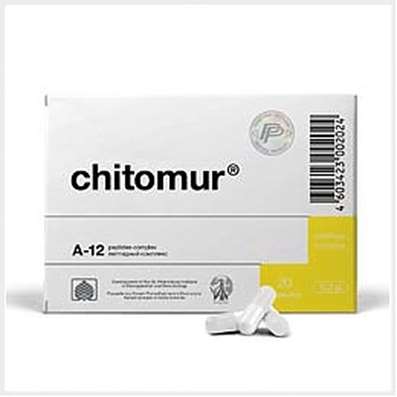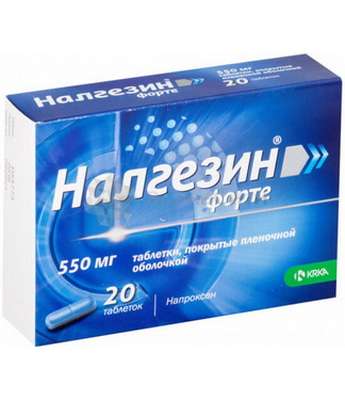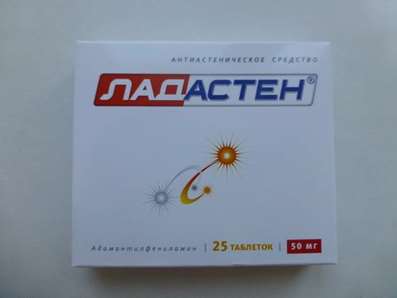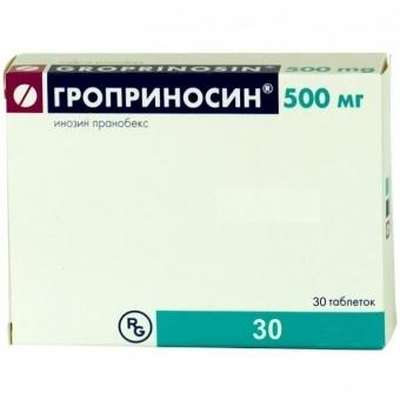Instruction for use: Oralsept
I want this, give me price
Active substance Benzydamine
ATX code A01AD02 Benzydamine
Pharmacological group
Other non-narcotic analgesics, including non-steroidal and other anti-inflammatory drugs
Dental tools
Nosological classification (ICD-10)
B37.0 Thyroid gland
Mycotic seizure, Thrush of the oral cavity, Atrophic candidiasis of the oral cavity, Fungal diseases of the mouth, Fungal infections of the oral cavity, Fungal infections and inflammatory diseases of the mouth, Candidiasis of the gastrointestinal tract, Candidiasis of skin and mucous membranes of mouth and mouth, Candidiasis of the mouth, Candidiasis of the oral cavity, Candidiasis with lesions of the skin and mucous membranes, Candidiasis of the oral mucosa, Candidiasis of mucous membranes, Candidiasis of mucous membranes and skin, Candidiasis of the mucous membranes of the mouth and throat, Candidiasis of oral cavity and pharynx, Dermal-mucosal candidiasis of the oral cavity, Oropharyngeal candidiasis, Oropharyngeal candidiasis, Chronic atrophic candidiasis of the oral cavity, Chronic candidiasis of mucous membranes
J02 Acute pharyngitis
Inflammation of the nasopharynx, Inflammatory disease of the oropharynx, Inflammatory process of pharynx, Infectious diseases of ENT organs, Sore Throat Infection ,Exacerbation of inflammatory diseases of the pharynx and oral cavity, Pharyngitis, Pharyngitis acute, Pharyngitis, Pharyngolaringitis
J03 Acute tonsillitis [sore throat]
J04 Acute laryngitis and tracheitis
Cough in diseases of the upper respiratory tract, Laryngitis, acute Laryngitis, tracheitis sharp, pharyngolaryngitis, Infectious-inflammatory diseases of ENT organs
J06 Acute upper respiratory infections of multiple and unspecified
Frequent colds viral diseases, Infections of the upper respiratory tract, Acute respiratory disease influenza character, for colds Pain, Acute colds,Cold, respiratory infection,Seasonal colds, Pain in infectious and inflammatory diseases of the upper respiratory tract, Bacterial infections of the upper respiratory tract, Bacterial respiratory infections, Viral disease of the respiratory tract, Viral respiratory tract infections, Inflammatory disease of the upper respiratory tract, Inflammation of the upper respiratory tract disease, Inflammation of the upper respiratory tract illness with difficult sputum, Inflammatory airway disease, Secondary infections with colds, Shortness of sputum in acute and chronic respiratory diseases, Upper respiratory tract infection, Infections of the upper respiratory tract, Respiratory Tract Infections, Infections of the respiratory tract and lungs, Infectious-inflammatory diseases of the upper respiratory tract, Infectious-inflammatory diseases of the upper respiratory tract and ENT-organs, Infectious-inflammatory diseases of the upper respiratory tract in children and adults, Infectious-inflammatory diseases of the upper respiratory tract, Infectious inflammation of the airways,respiratory infection, Qatar upper respiratory tract, Catarrh of the upper respiratory tract, Catarrhal disease of the upper respiratory tract, Catarrhal symptoms of the upper respiratory tract, Coughing with a cold, SARS, ARI, ARI with rhinitis phenomena, Acute respiratory infection, Acute infectious and inflammatory disease of the upper respiratory tract, Acute respiratory disease, Sore throat or nose, Respiratory viral infections, Respiratory diseases, Respiratory infections, Recurrent respiratory infections, Secondary infection with influenza, cold in the chest, Feverish condition with flu usitis, acute sinusitis, genyantritis, purulent sinusitis
J31.2 Chronic pharyngitis
Pharyngitis chronic, Exacerbation of inflammatory diseases of the pharynx and oral cavityHypertrophic pharyngitis, Inflammatory process of pharynx, Sore Throat Infection, Infectious-inflammatory diseases of the pharynx, Infectious-inflammatory diseases of the oral cavity and pharynx, Atrophic pharyngitis
J35.0 Chronic tonsillitis
Tonsillitis chronic, Inflammatory diseases of the tonsils, Angina chronic, Chronic hypertrophic tonsillitis, Tonsillar angina
J37.0 Chronic laryngitis
Chronic atrophic laryngitis
K05 Gingivitis and periodontal disease
Gingivitis, Inflammatory Gum Disease, Inflammatory diseases of the oral cavity, Hyperplastic gingivitis, Diseases of the mouth, Catarrhal gingivitis, Erythematous gingivitis, Ulcerative gingivitis, Exacerbation of inflammatory diseases of the pharynx and oral cavity, Bleeding from the gums, Epstein cysts
K05.1 Chronic gingivitis
Gingivitis chronic
K05.4 Periodontal disease
Alveolar pyorrhea, Amphodontosis, Chronic parodontosis, Superficial and deep periodontitis, Pyorrhea
K11.2 Sialadenite
Calculous inflammation of the salivary glands, Stones of the ducts of the salivary glands
K12 Stomatitis and Related Lesions
Bacterial stomatitis, Inflammatory diseases of the oral cavity, Inflammatory diseases of tissues of the oral cavity, Inflammatory processes in the oral cavity, Fungal diseases of the mouth, Fungal infections of the oral cavity, Fungal infections and inflammatory diseases of the mouth, Diseases of the mouth, Infectious-inflammatory disease of the oral cavity, Exacerbation of inflammatory diseases of the pharynx and oral cavity, Stomatitis, Angular stomatitis, Chronic recurrent stomatitis, Ulcerative necrotic diseases of the oral mucosa, Ulcerative necrotic gingivostomatitis, Ulcerative stomatitis, Erosive-ulcerative lesion of the oral mucosa, Erosive-ulcerative lesions of the mucous membrane of the oral cavity, Erotic mucous membrane of the oral cavity, Recurrent ulcerative stomatitis
K13.7 Other and unspecified lesions of oral mucosa
Aspirin burn of the oral mucosa, Gum pain when wearing dentures, Inflammation of the mouth, Inflammation of the oral mucosa, Inflammation of the oral mucosa after radiation therapy, Inflammation of the oral mucosa after chemotherapy, Inflammation of the oral mucosa, Inflammation of the mucous membranes of the mouth, Inflammatory diseases of the oral cavity, Inflammatory process of pharynx, Disease of the oral mucosa, Injuries to the oral cavity and larynx, Injuries of the oral mucosa, Trophic diseases of the oral mucosa, Erosive-ulcerative periodontal disease, Erosive-ulcerative lesion of the oral mucosa, Erotic mucous membrane of the oral cavity, Erotic-ulcerative periodontal lesions, Erotic-ulcerative lesions of the oral mucosa, Radio-epileleitis, Irritation from dental prostheses, Irritation of the oral mucosa with dentures and braces, Oral cavity, When wearing dentures
K14.0 Glossitis
R07.0 Sore throat
T88.9 Complication of surgical and medical care, unspecified
Pain in the postoperative period, Pain in the postoperative period after orthopedic surgery, Pain syndrome after diagnostic procedures, Pain after surgery Diagnostic, Pain after surgery, Pain after orthopedic surgery, Pain after the removal of hemorrhoids, Pain in the application of excimer laser, Pain with injuries and after surgical interventions, Pain syndromes in the dental practice, Painful diagnostic intervention, Painful diagnostic manipulations, Painful instrumental diagnostic procedures, Painful instrumental manipulation, Painful treatments, Painful manipulations, Painful dressings, Painful therapeutic interventions, Pain in the area of the surgical wound, Pain in the postoperative period, Pain after diagnostic procedures, Pain after orthopedic surgery, Pain during diagnostic procedures, Pain during therapeutic procedures, Pain in orthopedics, The pain in the postoperative period, Pain after diagnostic procedures, The pain after sclerotherapy, The pain after dental surgery, postoperative Pain, Pain postoperative and posttraumatic, The pain of tooth extraction, Inflammation after surgery or injury, Inflammation after orthopedic surgery, Inflammation after surgery, The inflammatory syndrome after surgery, Festering postoperative fistula, Operating wound, Complications after tooth extraction
Z100 * CLASS XXII Surgical practice
Abdominal surgery, adenomectomy, Amputation, Coronary angioplasty, Angioplasty of the carotid arteries, Antiseptic skin treatment for wounds, Antiseptic Hand, Appendectomy, atherectomy, Balloon coronary angioplasty, Vaginal hysterectomy, The coronary bypass, Interventions in the vagina and cervix, Interventions on the bladder, Intervention in the mouth, Restoration and reconstructive surgery, Hand hygiene of medical personnel, Gynecologic surgery, Gynecological intervention, Gynecological surgery, Hypovolemic shock during operations, Disinfection of purulent wounds, Disinfection of wounds edges, Diagnostic intervention, Diagnostic procedures, Cervical Diathermocoagulation, Long-surgery, Replacing the fistula catheters, Infection in orthopedic surgery, Artificial heart valve, cystectomy, Short-term outpatient surgery, Short-term operation, Short surgical procedures, Krikotireotomiya, Blood loss during surgery, Bleeding during surgery and in the postoperative period, Kuldotsentez, laser photocoagulation, laser coagulation, retinal laser coagulation, Laparoscopy, Laparoscopy in Gynecology, CSF fistula, Small gynecological operations, Small surgical procedures, Mastectomy and subsequent plastic, mediastinotomy, Microsurgical operations on the ear, Mukogingivalnye operation, suturing, Minor surgery, neurosurgical operation, Immobilization of the eyeball in ophthalmic surgery, testectomy, pancreatectomy, Perikardektomiya, The period of rehabilitation after surgery, The period of, convalescence after surgery, Percutaneous transluminal coronary angioplasty, Pleural thoracentesis, Pneumonia postoperative and posttraumatic, Preparation for surgical procedures, Preparation for surgery, Preparation of the surgeon's hands before surgery, Preparation of the colon for surgical procedures, Postoperative aspiration pneumonia in neurosurgical and thoracic surgery, Postoperative nausea, Postoperative bleeding, postoperative granuloma, postoperative shock, The early postoperative period, myocardial revascularization, Radiectomy, gastric Resection, bowel resection, uterine Resection, liver Resection, enterectomy, Resection of part of the stomach, Reocclusion of the operated vessel, Bonding tissues during surgical procedures, Removal of sutures, Condition after eye surgery, Condition after surgery, Condition after surgery in the nasal cavity, Condition after gastrectomy, Status after resection of the small intestine, Condition after tonsillectomy, Condition after removal of the duodenum, Condition after phlebectomy, Vascular surgery, Splenectomy, Sterilization of surgical instruments, Sterilization of surgical instruments, sternotomy, Dental surgery, Dental intervention in periodontal tissues, strumectomy, Tonsillectomy, Thoracic surgery, total gastrectomy, Transdermal intravascular coronary angioplasty, Transurethral resection, Turbinektomiya, Removal of a tooth, cataract surgery, Removal of cysts, tonsillectomy, Removal of fibroids, Removing the mobile primary teeth, Removing polyps, Removing broken tooth, Removal of the uterus body, Removal of sutures, Urethrotomy, Fistula likvoroprovodyaschih ways, Frontoetmoidogaymorotomiya, Surgical infection, Surgical treatment of chronic limb ulcersm, Surgery, The surgery in the anal area, The surgery on the colon, Surgical practice, The surgical procedure, Surgical interventions, Surgery on the gastrointestinal tract, Surgical procedures on the urinary tract, Surgical procedures on the urinary system, Surgical intervention of the genitourinary system, Surgical procedures on the heart, Surgical manipulation, surgery, Surgery on the veins, Surgical intervention, Vascular surgery, Surgical treatment of thrombosis, cholecystectomy, Partial gastric resection, transabdominal hysterectomy, Percutaneous transluminal coronary angioplasty, Percutaneous transluminal angioplasty, Coronary artery bypass, tooth Extirpation, Extirpation of milk teeth, pulpectomy, pulsative cardiopulmonary bypass, tooth Extraction, teeth Extraction, cataract extraction, Electrocoagulation, endourological intervention, episiotomy, Etmoidotomiya, Complications after tooth extraction
Composition
Spray for topical use dosed 1 dose
active substance:
benzidamine hydrochloride 0.255 mg
auxiliary substances: methyl parahydroxybenzoate - 0.17 mg; ethanol 96% - 17 mg; glycerol (glycerol) - 8.5 mg; flavor of peppermint 27198/14 - 0.17 mg; sodium saccharinate - 0.0408 mg; polysorbate 60 - 0.0085 mg; sodium hydrogen carbonate - 0.0034 mg; dye quinoline yellow 70 (E104) 0.0034 mg; dye indigotine 85% (E132) - 0.00017 mg; Purified water - up to 170 μl
Description of dosage form
Transparent solution of yellow-green color with the aroma of peppermint.
pharmachologic effect
Pharmacological action - anti-inflammatory local, antifungal local, local anesthetic.
Pharmacodynamics
Benzidamine hydrochloride is an NSAID, an indazole derivative, without a carboxyl group. The absence of a carboxyl group imparts the following features: benzydamine is a weak base (whereas most NSAIDs are weak acids), has a high lipophilicity, the pH gradient penetrates well into the inflammatory focus (where the pH is lower) and accumulates in therapeutic concentrations.
It has anti-inflammatory and local anesthetic effect, antiseptic (against a wide range of microorganisms), and also antifungal action.
Anti-inflammatory effect of the drug is due to a decrease in capillary permeability, stabilization of cell membranes due to inhibition of synthesis and inactivation of PG, histamine, bradykinin, cytokines, complement factors and other nonspecific endogenous damaging factors.
Benzydamine inhibits the production of pro-inflammatory cytokines, especially TNF-α, to a lesser extent - IL-1β. The main feature of benzidamine is that, being a weak inhibitor of the synthesis of PG, it demonstrates a powerful inhibition of pro-inflammatory cytokines. For this reason, benzydamine can be classified as a cytokine-suppressing anti-inflammatory drug.
The local anesthetic effect of benzidine is related to the structural features of its molecule, similar to local anesthetics. The analgesic effect is due to an indirect decrease in the concentration of biogenic amines possessing algogenic properties and an increase in the threshold of pain sensitivity of the receptor apparatus; benzidamine also blocks the interaction of bradykinin with tissue receptors, restores microcirculation and reduces pain sensitivity in the focus of inflammation.
Benzydamine has an antibacterial effect due to the rapid penetration of microorganisms through the membranes, followed by damage to cellular structures, metabolic disorders and cell lysosomes.
Has an antifungal effect against 20 strains of Candida albicans and non-albicans-strains, causing structural modifications of the cell wall of fungi and their metabolic chains, thus inhibiting their reproduction.
Pharmacokinetics
When topical application is well absorbed through the mucous membranes and quickly penetrates into inflamed tissues, it is found in blood plasma in an amount insufficient to obtain systemic effects. It is excreted mainly by the kidneys and through the intestine in the form of metabolites or conjugation products.
Indication
Symptomatic therapy of pain syndrome with inflammatory diseases of the oral cavity and ENT organs of different etiology:
pharyngitis, laryngitis, tonsillitis;
gingivitis, glossitis, periodontitis, stomatitis (including after radiation and chemotherapy);
calculous inflammation of the salivary glands;
after treatment or removal of teeth;
after surgical interventions and traumas (tonsillectomy, jaw fractures);
Candidiasis of the oral mucosa (as part of a combination therapy).
For infectious and inflammatory diseases requiring systemic treatment, the drug ORALSEPT® is used as part of a combination therapy.
Contraindications
hypersensitivity to benzydamine or other components of the drug;
children under 3 years.
With caution: hypersensitivity to acetylsalicylic acid or other NSAIDs; bronchial asthma (including in the anamnesis).
pregnancy and lactation
Data on animal studies during pregnancy and during breastfeeding are not sufficient, and adequate and strictly controlled studies have not been conducted in pregnant women; In addition, it is not known whether benzidamine penetrates into breast milk, therefore, the potential risk to humans can not be determined.
During pregnancy and during breastfeeding, the drug ORALSEPT® is used only after consultation with the attending physician if the intended benefit to the mother exceeds the potential risk to the fetus and the baby.
Side effects
Local reactions: dry mouth, numbness, burning in the mouth.
Allergic reactions: hypersensitivity reactions, including skin rash, itching, hives, photosensitivity, angioedema, anaphylactic reactions.
Other: laryngospasm.
If any of the side effects described in the description are aggravated, or any other side effects not listed in the description appear, the doctor should be informed.
Interaction
Not studied. The pharmaceutical incompatibility of ORALSEPT® with other drugs has not been established.
Dosing and Administration
Locally.
1 dose of spray corresponds to 1 push and is equivalent to 0.17 ml of solution.
Adults and children over 12 years of age are prescribed 4-8 doses 2-6 times a day; children 3-6 years: 1 dose / 4 kg (maximum - 4 doses) 2-6 times a day; 6-12 years - 4 doses 2-6 times a day.
A course of treatment:
- with inflammatory diseases of the oral cavity and pharynx - from 4 to 15 days;
- with odonto-stomatologic pathology - from 6 to 25 days;
- after surgery and trauma (tonsillectomy, jaw fractures) - from 4 to 7 days.
When using the drug for long periods, a doctor's consultation is necessary.
Instructions for use
1. Holding the bottle upright, raise the cap cap at an angle of 90 ° to the vial.
2. Insert the mouthpiece into the mouth and press the cap several times, according to the recommended dose. The period between two pressures must be at least 5 seconds.
3. Return the nozzle to its original position.
Caution: before using for the first time, press several times on the spray gun (into the air).
Do not exceed the recommended dosage.
Before use, consult a physician.
Overdose
To date, there have been no reports of overdose of ORALSEPT®.
Symptoms: agitation, convulsions, tremor, increased sweating, ataxia and vomiting (these symptoms can cause benzidamine if accidentally ingested at a high dose (hundreds of times higher than the therapeutic dose), especially in children).
Treatment of acute overdose: immediate gastric lavage, restoration of water-electrolyte balance, symptomatic treatment, adequate hydration.
If a dose greater than the recommended dose has been taken, rinse the mouth with sufficient water; if any adverse reactions occur, consult your doctor.
special instructions
When using the drug ORALSEPT ® possible development of hypersensitivity reactions. In this case, it is recommended that you stop treatment and consult with your doctor to prescribe appropriate therapy.
If there is a ulcerative lesion of the mucous membrane of the oropharynx, the patient should consult a doctor if the symptoms persist for more than 3 days.
The use of the drug ORALSEPT® is not recommended in patients with hypersensitivity to acetylsalicylic acid or other NSAIDs.
The drug ORALSEPT ® should be used with caution in patients with bronchial asthma, t. in this case, the development of bronchospasm.
Avoid contact with the eyes. If you get a spray into the eyes, wash them with plenty of water.
Influence on the ability to drive vehicles and mechanisms. The drug does not affect the ability to drive a car, the performance of potentially hazardous activities requiring increased concentration of attention and speed of psychomotor reactions or other type of activity that requires increased attention.
Form of issue
Spray for topical use dosed, 0.255 mg / dose. For 30 ml (176 doses) in a plastic white, opaque container with a dispenser and a folding tip. Each container is placed in a cardboard box.
Conditions of leave from pharmacies
Without recipe.
storage conditions
At a temperature of no higher than 25 ° C.
Keep out of the reach of children.
Shelf Life
4 years.
Do not use after the expiry date printed on the package.

 Cart
Cart





